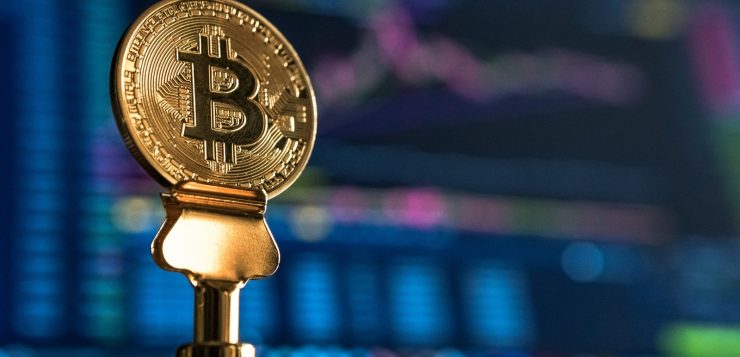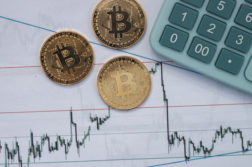History teaches us to beware of investment gains too good to be true
Apple Computer Co. was founded in a garage in 1976 by Steve Jobs, Steve Wozniak and Ronald Wayne. Apple was incorporated in the early part of 1977 with all three listed as founders. Just 12 months thereafter, Wayne sold his 10 percent stake in the company back to Wozniak and Jobs for $800 – a multi-billion-dollar mistake. Wayne won the lottery but lost the winning ticket. For the next three years, Apple sales nearly doubled every four months. On Dec. 12, 1980 Apple stock was available to the public at a price of $22 per share. If you would have purchased $10,000 of Apple stock at this time, your current investment would be worth over $4 million. With Apple stock, an investor owns part of a company and the intrinsic value of the underlying company supports the price of the stock.
This is the type of success investors chase, but often fall short thanks to bad timing, greed or lack of foresight. In many cases, chasing returns results in investment losses. It is easy to spot investment bubbles only after the fact. It is much harder to predict a bubble when unfiltered enthusiasm is thrown at an asset with investors gloating about the riches they made and the media hyping their success. History teaches us to beware of investment gains too good to be true, while investors pile money into the next big investment – cryptocurrencies.
TULIP MANIA
Tulips were introduced to Europe in the mid-16th century and began growing in popularity through the 1600s. At the time, the tulip was different from any other flower in Europe and quickly became a status symbol. The supply of tulip bulbs escalated wildly given the difficulty of importing bulbs from the East Indies and the years it takes to cultivate a bulb.
This created a tulip market in the advanced Dutch economy that developed many of the concepts of modern economics and markets we use today. Tulip mania reached its peak in the early winter of 1637. At the time, a single tulip bulb could be sold for 10 times what a craftsman would make in a year. Amazingly, a bulb could change hands over 10 times a day through contracts. However, deliveries were never made because tulip bulb contract prices collapsed abruptly and trading quickly became obsolete. Many experts blame the bubonic plague for the failure of trading, and point to tulip mania as the first modern day market bubble. Although out of touch with reality, the actual tulip bulb still had an intrinsic value.
U.S. HOUSING BUBBLE
After the tech bubble burst at the beginning of this century, housing prices across the United States increased significantly due to many factors including favorable tax policy for real estate, low interest rates, loose lending practices and speculative fever. Anybody could buy a home with no money down, low credit and unverified income. Cable shows promoted the ease of flipping properties and making money in an overextended housing market that continued to increase, reaching a peak in 2006. Once the economy started to stumble and the labor market showed signs of weakness, this exposed the questionable lending practices of mortgage institutions. From this point, the stock market reached a low in 2009, the great recession took hold, and the housing market raced to a low point in 2012 while homeowners who put nothing down could just walk away. Others struggled to hang onto their homes in the harsh labor environment. The previous housing bubble was the Great Depression. Most Americans did not see it coming and others who claim they did may have been lucky. Even with the significant decrease in the price of housing, the land and properties still had intrinsic value.
CRYPTOCURRENCIES
Cryptocurrencies are a decentralized electronic currency. The value of cryptocurrency is determined by perception, demand and velocity of the currency. Although this may seem like a hard-to-grasp concept, like cryptocurrencies, the U.S. dollar has no intrinsic value. However, it is backed by the U.S. government, while cryptocurrencies are backed by technology.
The most well-known and oldest cryptocurrency is Bitcoin. It experienced exponential growth since it was founded in 2009. If you purchased $100 of Bitcoin in 2010, it would be worth close to $300 million today. A unit of Bitcoin in 2010 soared from $0.003 to $9,028 today.
These are the gains that make the news.
With other asset bubbles throughout history, there has been a significant rise in the value of the underlying asset with an intrinsic value, even after the bubble. With cryptocurrencies, there is no intrinsic value.
Looking back 400 years at tulip mania, there were a set of rules and regulations set forth by the Dutch. Cryptocurrencies are not regulated. Investors could touch, feel or understand a desktop computer, tulip or home. Yet, this still did not stop the price bubble from popping.
With cryptocurrencies, investors are flocking to put money into an asset they do not understand with no intrinsic value. Warren Buffet, billionaire investor and CEO of Berkshire Hathaway, was asked about cryptocurrencies.
“In terms of cryptocurrencies, generally, I can say almost with certainty that they will come to a bad ending,” Buffett recently said on CNBC, noting he didn’t understand Bitcoin and other blockchain-based electronic assets. “Now, when it happens or how, or anything else, I don’t know.”
Financial bubbles have a common theme. As investors watch the news, or hear about coworkers and friends making money, speculation takes over with greed fueling the hopes of hitting it big. In many instances, investors have a fear of missing out. It looks easy to make money and overconfident investors jump in with both feet. While bubbles are hard to identify in progress, bubbles are easy to measure in hindsight after a market correction. When it comes to cryptocurrencies, I tell my clients to invest the amount they would feel comfortable completely losing. The story of cryptocurrencies is currently being written.
Read more at:
http://www.cobizmag.com/Trends/Cryptocurrencies-The-Next-Big-Investment-or-The-Next-Bubble/







